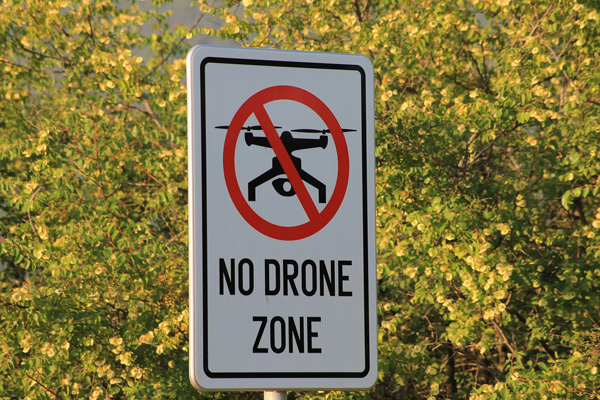Drone incursions disrupt Texas rescue, spark national security concerns

[Photo of a signage that shows ‘NO DRONE ZONE’ , Photo Credit to Pixabay]
On February 9th in Orange, Texas, a routine medical helicopter rescue was disrupted by a drone, underscoring a growing safety issue.
During an urgent operation to airlift a 3-year-old suffering from cardiac arrest, a drone flew perilously close to the helicopter, jeopardizing the critical operation.
This interference delayed the medical team's response, putting lives at risk. The Southeast Texas Air Rescue team emphasized the hazards unlicensed drones pose, particularly during critical operations like life flights and rescues.
Flight nurse Alyson Nickum-Smith and pilot Aaron Nieto shared their experiences, emphasizing the importance of vigilance and strict adherence to flying regulations to ensure safety.
This local incident is part of a broader national security issue . NORAD Chief Gen.
Gregory Guillot recently disclosed troubling statistics at a Senate Armed Services Committee hearing: over the past year, there were 350 drone incursions at 100 different U.S. military installations.
These UAVs pose potential threats, ranging from surveillance to disruptions of sensitive operations. The rising incidents of drones over military bases signal a significant security gap that requires immediate attention and stronger regulatory measures.
The Federal Aviation Administration (FAA) has been at the forefront of this issue, struggling to balance innovation and safety in drone technology.
Last December, the Federal Aviation Administration (FAA) imposed a temporary ban on drone flights across multiple locations in New Jersey and New York through mid-January.
Only operators with special government authorization were permitted to fly in these restricted zones, citing heightened security concerns.
Residents had reported numerous nighttime drone sightings since mid-November, raising public anxiety and prompting calls for clear answers from local and state officials.
Despite existing regulations, the rapid increase in drone activity has outpaced current laws, making enforcement challenging.
Since 2021, over 2,000 drone sightings have been reported near airports in the U.S., with as many as 60 causing pilots to take evasive actions.
Notably, in July 2022, a drone halted flights at Reagan Washington National Airport, and in June 2023, Pittsburgh International Airport faced a 30-minute ground stop due to unauthorized drone activity.
Although drones are required to transmit identification and location data through Remote ID , many local law enforcement agencies lack the necessary technology or resources to access this data.
The FAA has collaborated with law enforcement but has not provided sufficient resources for Remote ID enforcement.
As a result, unauthorized drone activity over critical infrastructure and even near airports, raising fears of potential collisions or disruptions to commercial air traffic.
As drones become more advanced and accessible, the implications for both civilian and military sectors grow more serious.
Incidents across various states, including a notable increase in New Jersey, have prompted federal and state agencies to investigate, aiming to mitigate risks without stifling technological advances.
The challenge lies in developing technologies and policies that effectively track and regulate drone activities to prevent interference with emergency operations and national security.
Addressing the intersection of drone technology with safety and security concerns calls for a collaborative effort between lawmakers, regulatory bodies, drone manufacturers, and operators.
Ensuring that this technology is used responsibly and in compliance with regulations must be a priority to protect public safety and national interests.
The incidents in Texas and at military installations across the country serve as a stark reminder of the delicate balance required in the age of increasingly autonomous and ubiquitous drone technology.

- Junyi Seo / Grade 11
- Seoul Academy

![THE HERALD STUDENT REPORTERS [US]](/assets/images/logo_student_us.png)
![THE HERALD STUDENT REPORTERS [Canada]](/assets/images/logo_student_ca.png)
